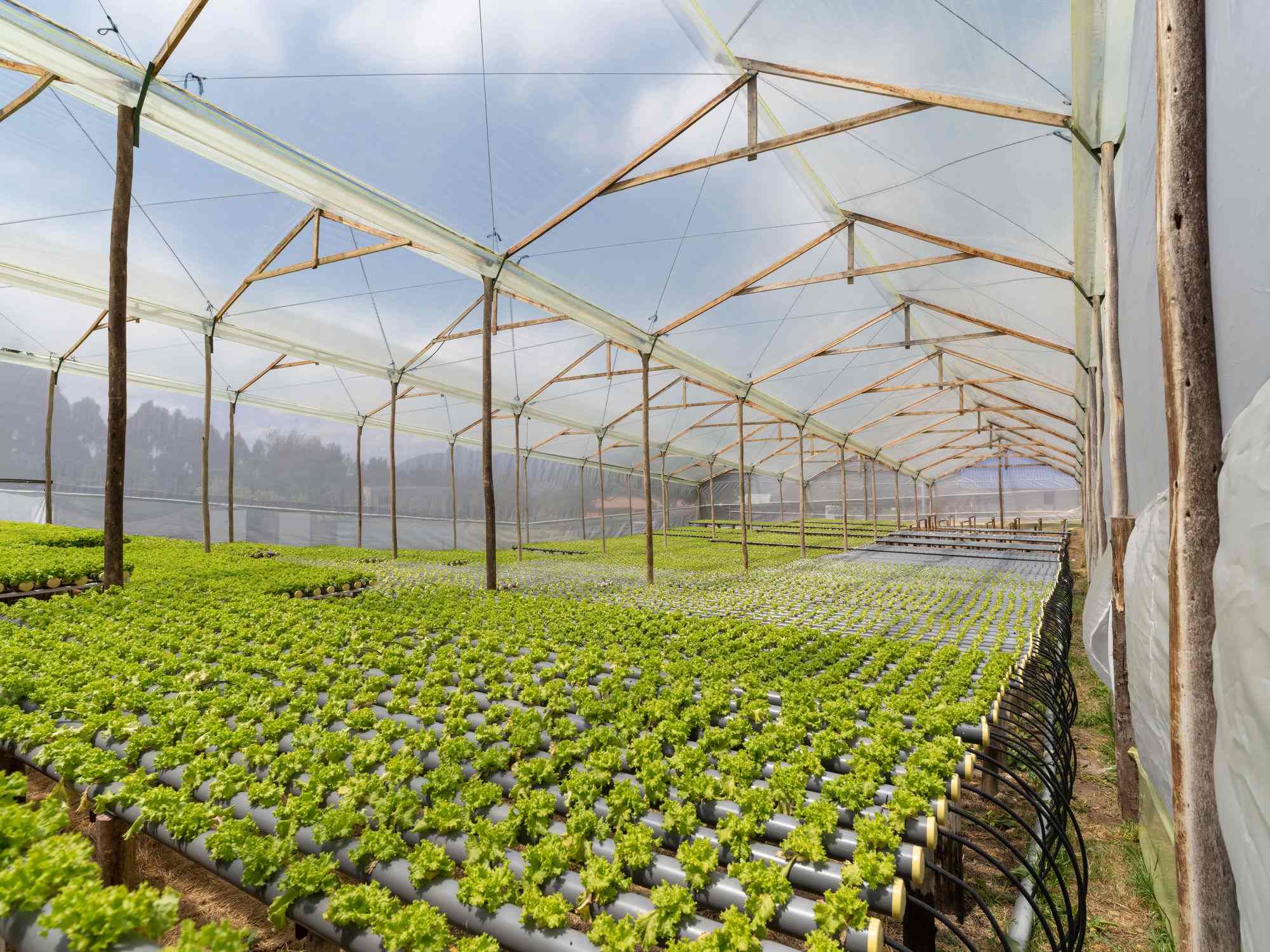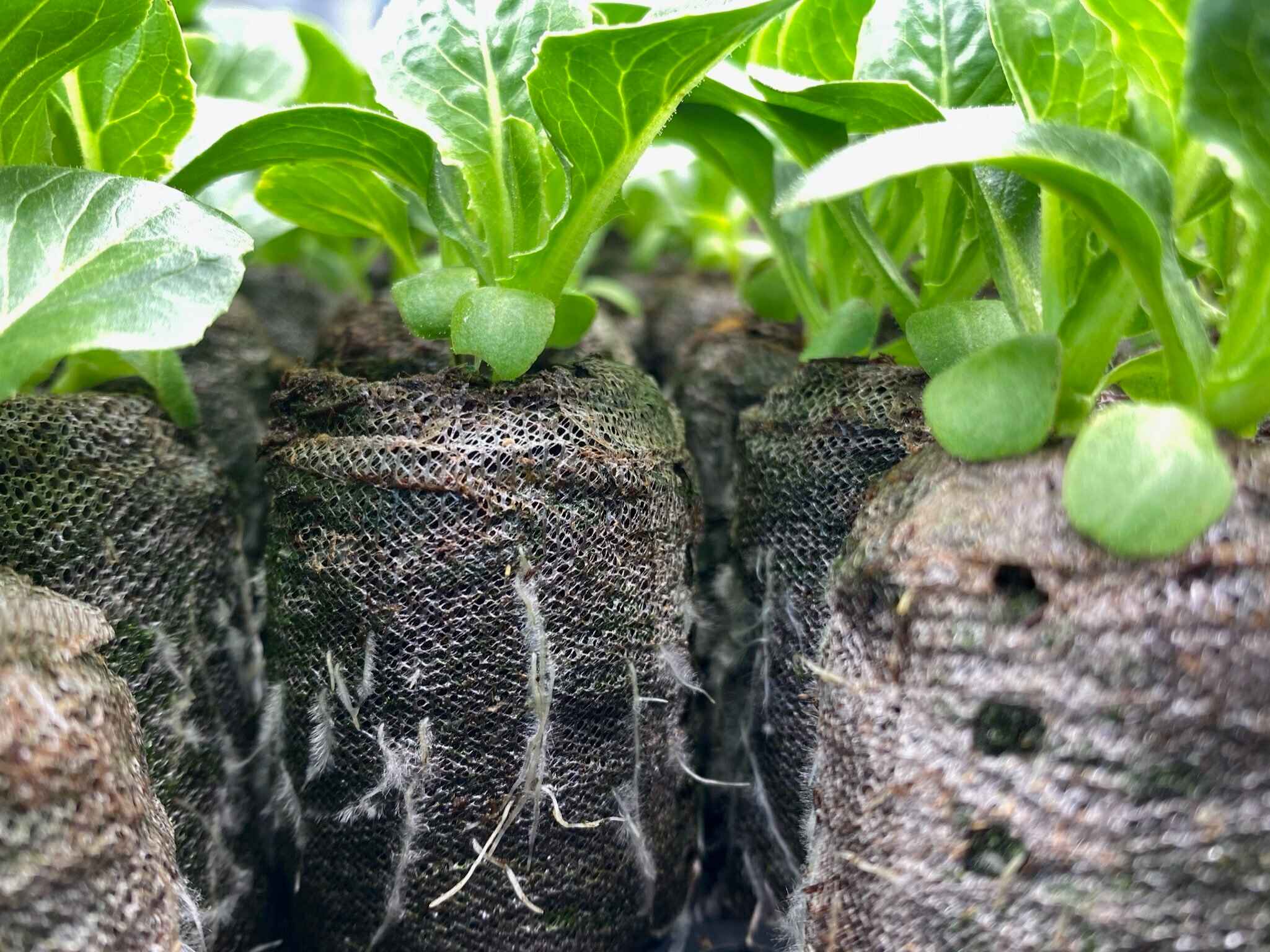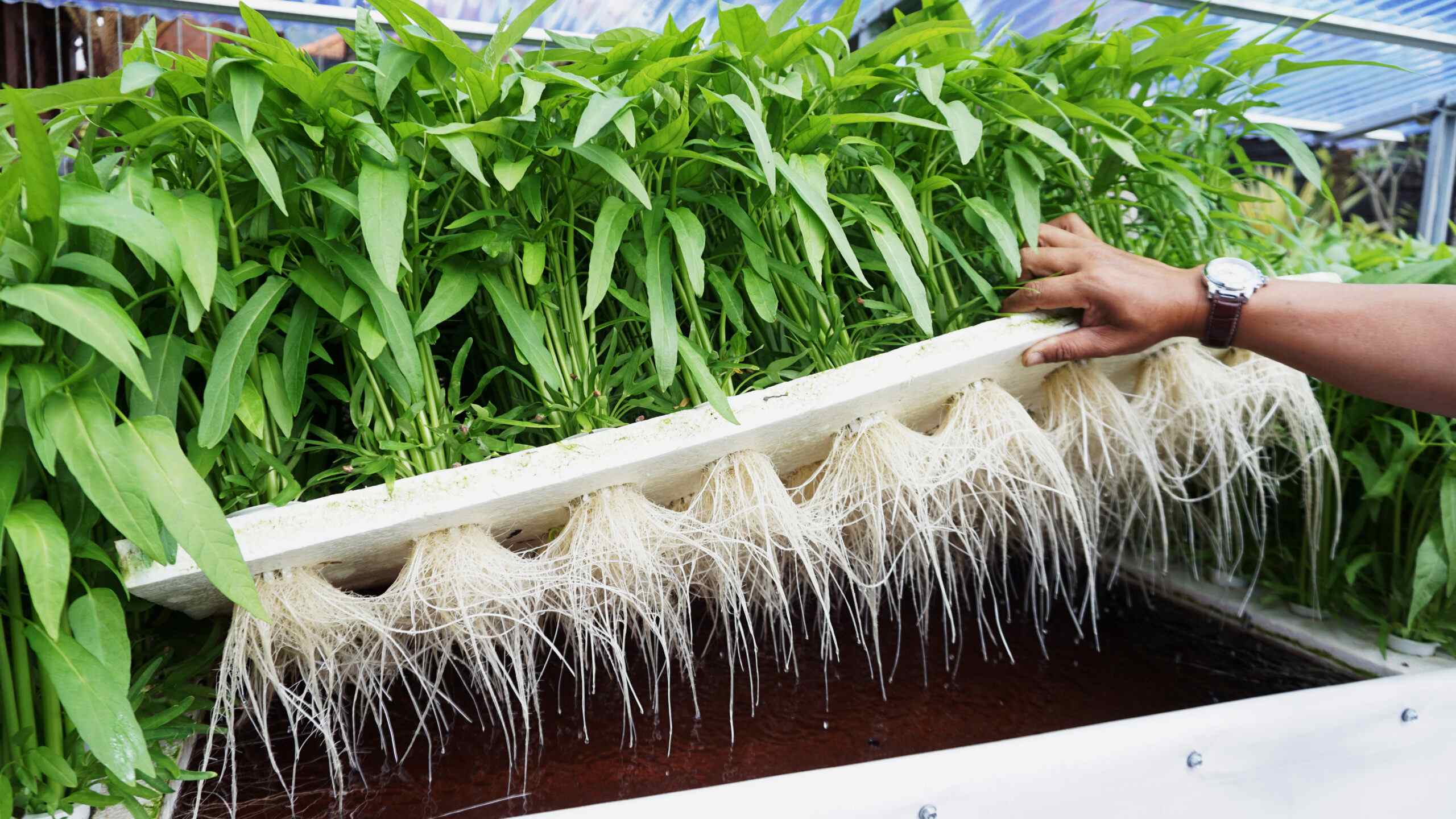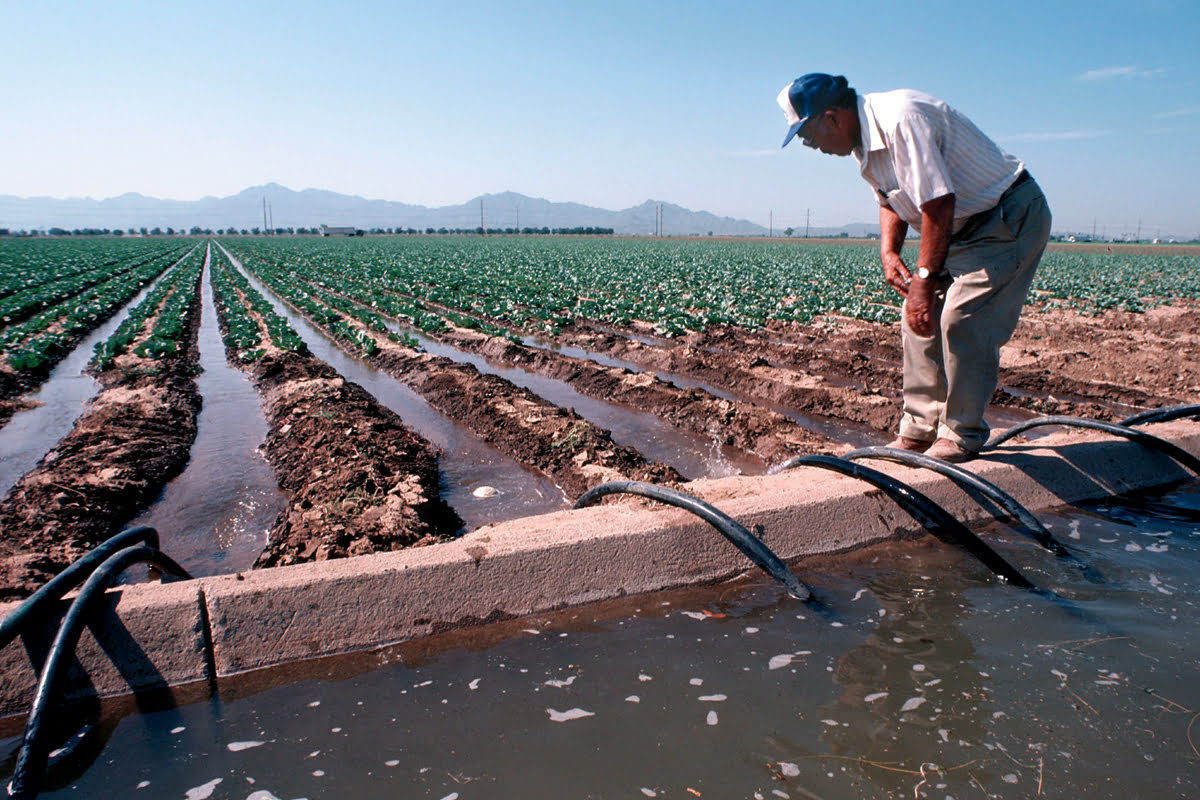Home>Gardening News and Trends>Gardening Trends>Why Is The Use Of Hydroponics Farming Most Likely Going To Increase In The Future
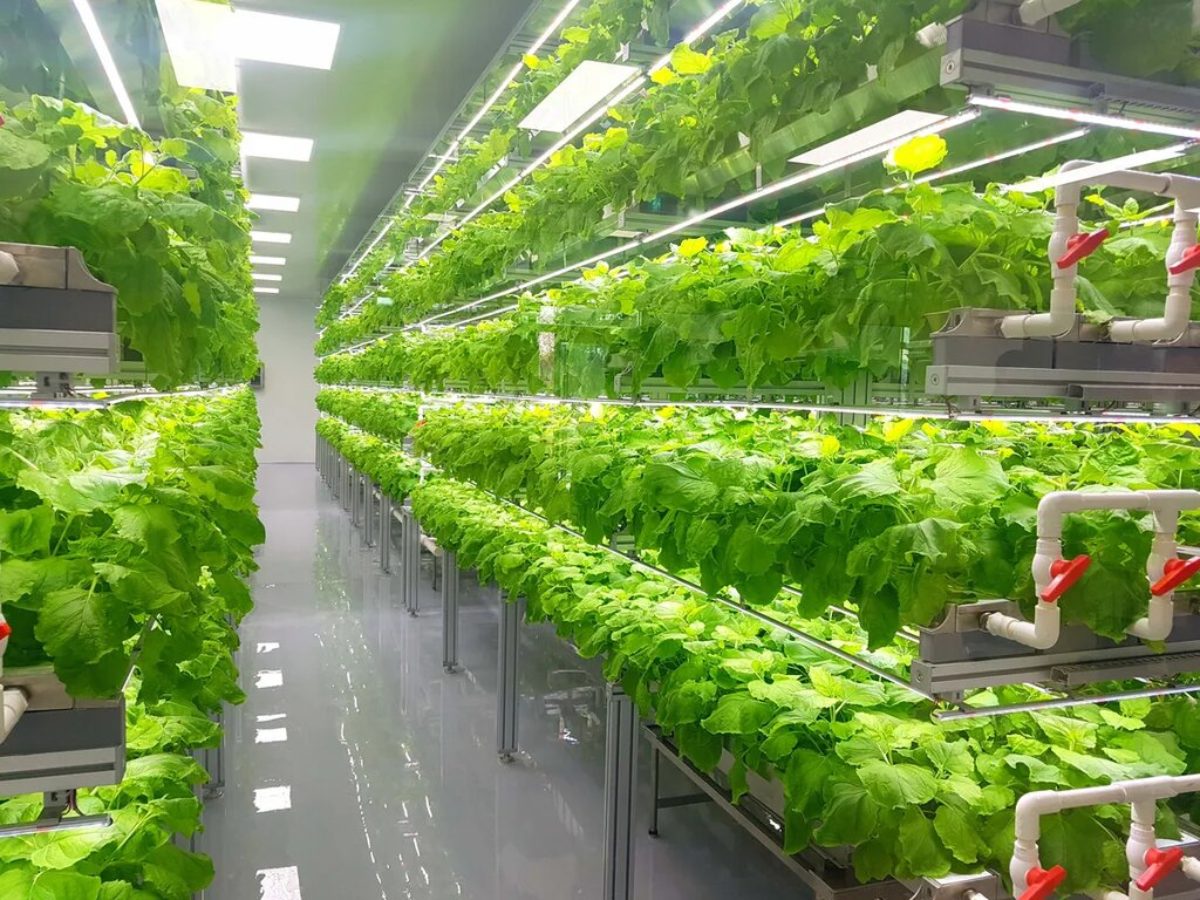

Gardening Trends
Why Is The Use Of Hydroponics Farming Most Likely Going To Increase In The Future
Modified: February 10, 2024
Discover why hydroponics farming is set to be one of the top gardening trends in the future and explore the potential benefits and growth opportunities it presents.
(Many of the links in this article redirect to a specific reviewed product. Your purchase of these products through affiliate links helps to generate commission for Chicagolandgardening.com, at no extra cost. Learn more)
Table of Contents
- Introduction
- Advantages of Hydroponics Farming
- Increasing Demand for Sustainable Agriculture
- Technological Advancements and Innovations
- Environmental Benefits of Hydroponics Farming
- Economic Benefits of Hydroponics Farming
- Urbanization and Limited Space for Traditional Farming
- Government Support and Incentives
- Challenges and Limitations of Hydroponics Farming
- Conclusion
Introduction
Gardening trends are constantly evolving, driven by a desire for sustainable practices and innovations in farming techniques. One such technique that has gained significant popularity in recent years is hydroponics farming. Hydroponics farming involves growing plants in a nutrient-rich water-based solution, without the use of soil. This method provides numerous advantages, making it a viable solution for the future of agriculture.
Hydroponics farming offers several benefits over traditional soil-based farming. Firstly, it allows for better control over the plant’s growing environment. Growers have the ability to adjust factors such as temperature, humidity, and pH levels, ensuring optimal conditions for plant growth. This level of control reduces the risk of diseases and pests, thus minimizing the need for pesticides and herbicides.
In addition, hydroponics farming requires significantly less water compared to traditional farming methods. The water used in this system is recirculated and reused, resulting in significant water savings. Given the global concerns over water scarcity, hydroponics farming offers a sustainable solution that conserves this precious resource.
Another advantage of hydroponics farming is its ability to grow crops in urban areas with limited space. As urbanization continues to increase, traditional farming practices face challenges in finding suitable land for cultivation. Hydroponics farming eliminates the need for vast expanses of land, as plants can be grown vertically and in controlled environments such as indoor farms or rooftop gardens. This opens up new possibilities for urban farming, reducing reliance on long-distance transportation of fresh produce.
Furthermore, hydroponics farming is not limited by seasonal constraints, allowing for year-round production. By providing the plants with the necessary nutrients directly, independent of soil conditions, growers can cultivate crops regardless of the external climate. This eliminates the risk of crop failures due to adverse weather conditions, providing a more reliable and consistent food supply.
With the increasing emphasis on sustainable agriculture and the need for efficient food production systems, the use of hydroponics farming is expected to rise significantly in the future. Technological advancements, such as improved lighting systems and automation, have made hydroponics farming more accessible and cost-effective. These innovations, coupled with the growing consumer demand for fresh, locally grown produce, create a favorable environment for the expansion of hydroponics farming.
As we look towards the future, it is evident that hydroponics farming offers a promising solution to many challenges faced by traditional farming methods. Its ability to conserve water, increase crop yields, and overcome spatial limitations makes it a sustainable and efficient option for meeting the global demand for food. In the following sections, we will delve further into the advantages of hydroponics farming, its environmental and economic benefits, as well as the challenges it faces.
Advantages of Hydroponics Farming
Hydroponics farming offers numerous advantages over traditional soil-based farming methods, making it an attractive option for sustainable agriculture. Here are some of the key benefits of hydroponics farming:
1. Efficient use of water: Hydroponics farming uses up to 90% less water compared to traditional farming. This is because the water is recirculated and reused, minimizing waste. Additionally, the plants only take up the water they need, reducing the risk of over- or under-watering.
2. Increased crop yields: Plants grown hydroponically often experience faster growth rates and higher yields compared to those grown in soil. This is due to the optimized growing conditions, including nutrient-rich solutions, controlled light exposure, and proper pH levels.
3. Elimination of soil-borne diseases and pests: By removing the need for soil, hydroponics farming eliminates the risk of soil-borne diseases and pests that can affect traditional crops. This reduces the reliance on harsh chemicals, such as pesticides and herbicides, making it a more environmentally friendly option.
4. Space utilization: Hydroponics farming allows for vertical growing, maximizing the use of limited space. This makes it ideal for urban areas where land availability is scarce. Vertical systems, such as vertical gardens or stacked trays, enable growers to produce more food in a smaller footprint.
5. Year-round production: Unlike traditional farming, hydroponics farming is not limited by seasonal changes. By providing the plants with an optimal growing environment, growers can cultivate crops year-round, ensuring a steady supply of fresh produce regardless of external weather conditions.
6. Reduced reliance on synthetic additives: With hydroponics farming, nutrient solutions can be tailored to meet the specific needs of plants. This reduces the reliance on synthetic fertilizers and allows for more organic and sustainable cultivation methods.
7. Enhanced control over plant growth: Growers have precise control over the growing conditions in hydroponics systems. This includes adjusting factors like temperature, pH levels, and lighting. Such control allows for optimized plant growth and development, resulting in healthier and more vigorous crops.
8. Efficient resource utilization: Hydroponics farming minimizes the use of resources such as land, water, and labor. With its ability to produce more food in less space and use less water, hydroponics farming offers a sustainable solution for increasing food production without straining the environment or relying heavily on agricultural labor.
These advantages make hydroponics farming an attractive option for sustainable agriculture. Its ability to address challenges like water scarcity, land limitations, and disease control positions it as a viable solution for meeting the increasing global demand for food. In the following sections, we will explore other factors contributing to the rise of hydroponics farming, including technological advancements, environmental benefits, and economic advantages.
Increasing Demand for Sustainable Agriculture
As the world becomes more conscious of the environmental impact of traditional farming practices, there is an increasing demand for sustainable agriculture methods. Consumers are seeking fresh, locally grown produce that is free from harmful pesticides and herbicides. This growing awareness has led to a surge in the popularity of sustainable farming practices like hydroponics.
One of the key drivers behind the demand for sustainable agriculture is the desire for healthier food options. Consumers are becoming more mindful of the impact of chemicals used in conventional farming on human health. Hydroponically grown plants are not exposed to soil contaminants or traditional agricultural chemicals, making them a healthier choice for consumption.
Additionally, the focus on sustainable agriculture is driven by the need to preserve and protect the environment. Conventional farming methods often result in soil erosion, water pollution from runoff, and the depletion of natural resources. Hydroponics farming minimizes these environmental concerns by eliminating the need for soil and significantly reducing water usage.
Furthermore, there is a growing interest in supporting local food systems. Consumers are increasingly aware of the carbon footprint associated with transporting food over long distances. Hydroponics farming allows for the cultivation of fresh produce in urban areas, reducing the need for long transportation routes and supporting local economies.
The demand for sustainable agriculture is not limited to consumers alone. Businesses, such as restaurants, grocery stores, and food processors, are also seeking sustainable and locally sourced ingredients. By incorporating hydroponically grown produce into their offerings, these businesses can cater to the growing demand for sustainable and responsibly produced food.
Government initiatives and regulations are also contributing to the increasing demand for sustainable agriculture. Many countries around the world are implementing policies to promote sustainable farming practices and reduce the reliance on conventional agriculture. These policies include grants, subsidies, and incentives for farmers to adopt more sustainable methods like hydroponics farming.
Overall, the demand for sustainable agriculture, including hydroponics farming, is driven by consumer preferences for healthier food, environmental concerns, support for local economies, and government initiatives. This increasing demand creates opportunities for growers to embrace hydroponics farming and meet the needs of a changing agricultural landscape.
Technological Advancements and Innovations
Technological advancements have played a significant role in the evolution and widespread adoption of hydroponics farming. Innovations in various aspects of hydroponics systems have made it more efficient, cost-effective, and accessible to a wider range of growers. These advancements have accelerated the growth of hydroponics farming as a viable solution for sustainable agriculture.
One of the key areas of innovation in hydroponics farming is lighting systems. Traditional farming relies on natural sunlight, which limits production to certain seasons and geographic locations. However, with the development of high-quality and energy-efficient LED grow lights, hydroponics farmers can provide plants with the ideal light spectrum for growth. LED lights can be customized to match the specific light requirements of different crops, resulting in faster growth rates and higher yields.
Automation is another technological advancement that has revolutionized hydroponics farming. Automated systems can monitor and control essential parameters such as temperature, humidity, nutrient levels, and pH balance. This reduces the need for manual labor and ensures consistent and optimal conditions for plant growth. Additionally, automation enables remote monitoring, allowing growers to manage their hydroponics systems from anywhere, improving productivity and efficiency.
Advancements in nutrient delivery systems have also contributed to the success of hydroponics farming. Nutrients can be delivered directly to the plant’s roots through various methods, such as nutrient film technique (NFT), deep water culture (DWC), or drip irrigation. These systems ensure that plants receive the necessary nutrients in the right quantities, promoting healthy growth and maximizing yields.
The development of smart sensors and data analytics has provided valuable insights for growers. Sensors can monitor and analyze key parameters such as water quality, nutrient levels, and environmental conditions in real-time. This data allows growers to fine-tune their hydroponics systems, optimize performance, and identify potential issues before they impact crop health.
Vertical farming, a concept where plants are grown in stacked layers, has gained popularity in recent years. This innovation maximizes space utilization, making it ideal for urban areas with limited land availability. Vertical farming systems often incorporate hydroponics farming techniques, allowing for the efficient production of a wide variety of crops in a small footprint.
Furthermore, research and development in the field of hydroponics are ongoing, with scientists continuously exploring new techniques and technologies to further enhance the efficiency and sustainability of hydroponics farming. This includes advancements in water management, energy-saving solutions, and plant breeding for hydroponics-specific traits.
Overall, technological advancements and innovations have played a crucial role in the growth and success of hydroponics farming. These advancements have made hydroponics systems more efficient, cost-effective, and accessible. As technology continues to evolve, it is expected that hydroponics farming will become even more streamlined and productive, further contributing to sustainable agriculture efforts.
Environmental Benefits of Hydroponics Farming
Hydroponics farming offers numerous environmental benefits when compared to traditional soil-based farming methods. These benefits make it an attractive option for sustainable agriculture and contribute to the overall reduction of environmental impact. Here are some of the key environmental advantages of hydroponics farming:
1. Water conservation: Hydroponics farming is incredibly water-efficient, using up to 90% less water compared to traditional farming. The water used in hydroponic systems is recirculated and reused, minimizing waste. This is especially important in regions facing water scarcity, where every drop counts.
2. Soil preservation: Traditional farming practices often result in soil erosion and degradation. By eliminating the need for soil, hydroponics farming helps preserve precious and fertile land. This prevents the loss of valuable topsoil and the potential for soil contamination from pesticides and chemicals.
3. Reduced use of chemicals: Hydroponics farms require minimal or no pesticides and herbicides, as the crops are not exposed to soil-borne pests and diseases typical of traditional farming. This reduces the release of harmful chemicals into the environment, improving air and water quality and promoting a healthier ecosystem.
4. Efficient use of fertilizers: Nutrient solutions used in hydroponics farming can be precisely tailored to the needs of each plant, reducing excess fertilizer use. This helps prevent nutrient runoff into water sources, which can lead to water pollution and ecosystem damage. Hydroponic systems also minimize the leaching of nutrients compared to traditional farming, ensuring efficient nutrient uptake by the plants.
5. Energy savings: While hydroponics systems require energy for lighting and climate control, technological advancements, such as energy-efficient LED lights and smart automation, have significantly reduced energy consumption. Additionally, the elimination of long-distance transportation for fresh produce in hydroponics farming reduces the carbon footprint associated with food distribution.
6. Reduced land footprint: Hydroponics farming allows for vertical growing and takes up significantly less space compared to traditional agriculture. This vertical cultivation method maximizes land utilization, making it suitable for urban areas with limited space. By utilizing existing infrastructure and repurposing unused buildings, hydroponics farms can optimize land use while minimizing the need for deforestation and expanding agricultural land.
7. Conservation of biodiversity: Traditional farming practices often lead to the clearing of natural habitats, leading to loss of biodiversity. Hydroponics farming reduces the demand for new agricultural land, preserving natural ecosystems and protecting biodiversity. The controlled environment of hydroponics systems also helps prevent the spread of invasive plants and pests, safeguarding local flora and fauna.
These environmental benefits position hydroponics farming as a sustainable and eco-friendly alternative to traditional agriculture. The reduced use of water, chemicals, and land, combined with energy savings and improved soil preservation, contribute to the conservation of natural resources and the protection of the environment for future generations.
Economic Benefits of Hydroponics Farming
Hydroponics farming offers several economic benefits that make it an appealing option for growers and investors in the agricultural industry. These economic advantages contribute to the growth and expansion of hydroponics farming as a viable and profitable business venture. Here are some of the key economic benefits of hydroponics farming:
1. Higher crop yields: Hydroponics farming often yields higher crop yields compared to traditional farming methods. The optimized growing conditions, such as controlled nutrient delivery, precise environmental control, and reduced risk of pests and diseases, result in faster and healthier plant growth. This translates into increased production and higher revenue potential for growers.
2. Year-round production: Unlike traditional farming, hydroponics farming allows for year-round production regardless of external climate conditions. By providing the ideal growing environment, growers can cultivate crops continuously, leading to a consistent and reliable supply of fresh produce. This steady production can lead to increased market demand and better profitability.
3. Shorter crop cycles: The controlled environment of hydroponics systems promotes accelerated plant growth, resulting in shorter crop cycles. This means that crops can be grown and harvested more frequently compared to traditional methods. Shorter crop cycles allow for quicker turnover and faster return on investment for growers.
4. Reduced water and fertilizer costs: Hydroponics farming is highly efficient in its use of water and fertilizers. By recirculating and reusing water, growers can significantly reduce water consumption and associated costs. Additionally, the precise delivery of nutrients to plants in hydroponics systems minimizes fertilizer waste, leading to cost savings in fertilizer expenses.
5. Utilization of unused or underutilized spaces: Hydroponics farming allows for the utilization of unused or underutilized spaces such as abandoned buildings, warehouses, or rooftops for cultivation. By repurposing existing infrastructure, growers can save on land acquisition costs and have easier access to urban markets. This also reduces the need for transportation and storage costs associated with transporting produce from rural farming areas to urban centers.
6. Increased market demand for locally grown produce: There is a growing consumer preference for locally sourced and fresh produce. Hydroponics farming enables growers to cater to this market demand by producing high-quality, locally grown crops. This opens up opportunities for direct sales to restaurants, grocery stores, and farmers markets, allowing growers to capture higher margins and establish stronger relationships with consumers.
7. Scalability and flexibility: Hydroponics systems can be easily scaled up or down to meet market demand. Growers have the flexibility to expand their operations gradually, adding more production units or increasing the variety of crops grown. This adaptability allows for efficient resource allocation and adjustments based on market trends and preferences.
These economic benefits position hydroponics farming as a profitable venture for growers and investors. Higher crop yields, year-round production, reduced costs for water and fertilizers, utilization of underutilized spaces, increased market demand for locally grown produce, and scalability all contribute to the long-term viability and financial success of hydroponics farming enterprises.
Urbanization and Limited Space for Traditional Farming
As urbanization continues to accelerate, traditional farming methods face challenges in finding suitable land for cultivation. The expansion of cities and the increasing demand for infrastructure has led to a scarcity of agricultural land near urban centers. This limitation on available space for traditional farming has prompted the exploration and adoption of alternative methods such as hydroponics farming.
One of the key advantages of hydroponics farming in urban areas is its ability to maximize space utilization. Traditional farming requires vast expanses of land, which are often not available in densely populated urban environments. Hydroponics farming, on the other hand, can be implemented vertically or in controlled indoor environments, making it possible to grow crops in a smaller footprint.
Vertical farming systems, commonly used in hydroponics, involve cultivating plants in stacked layers. This vertical arrangement allows for multiple levels of crop production, maximizing the use of available space. By utilizing vertical space, hydroponics farms can significantly increase the production capacity compared to traditional farming methods that rely solely on horizontal cultivation.
In addition to vertical farming, hydroponics systems can be implemented in various urban settings such as rooftops, balconies, or repurposed buildings. These underutilized spaces can be transformed into productive hydroponics farms, converting idle areas into active food production hubs. By capitalizing on unused urban spaces, hydroponics farming brings agriculture closer to urban markets, reducing the need for long-distance transportation of fresh produce and increasing the overall sustainability of the food system.
Moreover, the controlled environment of hydroponics farming allows for year-round production, independent of the seasonal constraints imposed by traditional farming. This uninterrupted production cycle ensures a continuous supply of fresh and locally grown produce, meeting the demands of urban populations who seek access to healthier and more sustainable food options.
The limited space challenge in urban areas is further exacerbated by land prices, which tend to be higher in developed urban centers. Hydroponics farming offers an economically viable solution as it requires less land and can generate higher yields per unit of cultivation area. This higher productivity can contribute to the financial viability of hydroponics farms, enabling growers to operate profitably in urban environments.
Overall, the combination of limited space and the increasing urbanization trend necessitates innovative approaches to food production. Hydroponics farming addresses the challenges of land scarcity in urban areas by maximizing space utilization, utilizing underutilized spaces, and providing a controlled and efficient method to grow crops closer to urban populations. As urbanization continues, hydroponics farming is expected to play a significant role in ensuring sustainable and resilient food systems.
Government Support and Incentives
The growing recognition of the environmental and economic benefits of hydroponics farming has led governments around the world to provide support and incentives for its adoption. These measures aim to promote sustainable agriculture practices, increase food security, and reduce the environmental impacts of traditional farming. Here are some of the ways in which governments support hydroponics farming:
1. Financial incentives: Governments offer a range of financial incentives to encourage growers to adopt hydroponics farming. These incentives may include grants, subsidies, and low-interest loans for the establishment and operation of hydroponic farms. Financial support helps offset the initial costs of setting up hydroponics systems, making it more accessible and enticing for farmers to transition to this sustainable farming method.
2. Research and development initiatives: Governments invest in research and development initiatives to explore and enhance hydroponics farming techniques. Funding is allocated to universities, research institutions, and agricultural centers to conduct studies and advancements in the field. This research helps refine and optimize hydroponics systems, leading to improved efficiency, productivity, and sustainability.
3. Education and training programs: Governments provide education and training programs to support farmers in adopting hydroponics farming. These programs offer guidance on the installation and operation of hydroponic systems, as well as best practices for crop management. By equipping growers with the knowledge and skills needed for successful hydroponics farming, governments facilitate the transition from traditional agriculture to the more sustainable and efficient hydroponic methods.
4. Regulatory support: Governments establish regulatory frameworks and guidelines to ensure the safe and sustainable operation of hydroponics farms. These regulations may include standards for water and nutrient management, environmental impact assessments, and certifications for organic hydroponics farming. By providing clear guidelines, governments promote transparency and consumer confidence in hydroponically grown produce.
5. Market incentives: Governments create market incentives to promote the consumption and sale of hydroponically grown produce. This may include preferential procurement policies, where government institutions prioritize purchasing locally produced hydroponic crops for their programs and facilities. Additionally, governments may offer tax benefits or preferential treatment for businesses engaged in hydroponics farming, fostering a favorable market environment for growers and encouraging investment in the industry.
6. Sustainability initiatives: Many governments have sustainability targets and commitments to reduce greenhouse gas emissions and promote sustainable practices. Hydroponics farming aligns with these goals by conserving water, reducing chemical use, and minimizing the carbon footprint associated with food production. Governments incorporate hydroponics farming into their sustainability initiatives, recognizing its potential in achieving environmental and climate objectives.
Government support and incentives for hydroponics farming play a crucial role in encouraging the adoption of this sustainable farming method. By providing financial assistance, research support, education programs, and market incentives, governments contribute to the growth and success of hydroponics farming, creating a more sustainable and resilient agricultural sector.
Challenges and Limitations of Hydroponics Farming
While hydroponics farming offers numerous advantages, there are also challenges and limitations that need to be considered. These challenges can impact the feasibility and success of hydroponics farming operations. It is important to be aware of these limitations and develop strategies to overcome them. Here are some of the main challenges and limitations of hydroponics farming:
1. High initial setup costs: The initial investment required to set up a hydroponics farm can be higher compared to traditional farming methods. Costs include the construction or retrofitting of growing structures, installation of hydroponics systems, purchase of appropriate lighting systems, and acquisition of nutrient solutions and equipment. The high upfront capital requirement can be a barrier, particularly for small-scale farmers or those with limited financial resources.
2. Technological expertise: Hydroponics farming requires a good understanding of the hydroponic systems, including nutrient management, environmental control, and plant biology. Growers need to have or acquire the necessary technical knowledge and skills to operate and maintain the systems effectively. For farmers transitioning from traditional farming, there may be a learning curve in adapting to the specialized requirements of hydroponics.
3. Energy consumption: The use of artificial lighting and environmental control systems in hydroponics farming can lead to higher energy consumption compared to traditional farming practices. Although advancements in LED lighting technology have improved energy efficiency, growers must still consider the ongoing energy costs associated with running these systems. Strategies such as optimizing lighting schedules and using energy-saving techniques can help mitigate energy expenses.
4. Nutrient management: Proper nutrient management is critical in hydroponics farming to ensure optimal plant growth and prevent nutrient deficiencies or imbalances. Maintaining the correct ratios of essential nutrients in the nutrient solution requires regular monitoring and adjustment. Over- or under-feeding of plants can negatively impact crop productivity and health, necessitating careful attention to nutrient management protocols.
5. Disease and pest management: While hydroponics farming reduces the risk of soil-borne diseases and pests, it does not eliminate the possibility of these challenges. Growers need to implement appropriate measures to prevent and control diseases and pests in hydroponic systems. This may include using biological controls, implementing strict hygiene practices, and regularly monitoring plants for signs of infestation or disease.
6. Limited crop variety: Certain crops are better suited for hydroponics farming than others. Leafy greens, herbs, and some fruits like tomatoes and strawberries are well-adapted to hydroponic systems. However, crops with extensive root systems or those that rely heavily on soil microorganisms for nutrient uptake may be more challenging to cultivate hydroponically. The limited crop variety available for hydroponics farming may restrict the range of produce that can be grown.
7. Water quality and availability: While hydroponics farming is known for its water efficiency, there is a need for a consistent, high-quality water supply. The water used in hydroponics should be free from contaminants and suitable for plant growth. In areas with limited access to clean water, additional filtration or treatment systems may be required, adding to the operational costs of hydroponics farms.
Despite these challenges and limitations, many of them can be overcome through proper planning, training, and the implementation of appropriate management practices. Continuous learning, staying updated with technological advancements, and adapting to specific growing conditions can help growers optimize their hydroponics operations and maximize their potential for success.
Conclusion
Hydroponics farming offers a sustainable and efficient solution to the challenges faced by traditional farming methods. With its numerous advantages, including water efficiency, higher crop yields, and the ability to grow crops in urban areas with limited space, hydroponics farming is well-positioned to meet the increasing demand for fresh, locally grown produce.
The adoption of hydroponics farming is driven by various factors. The demand for sustainable agriculture practices, concerns over food security, and the desire for healthier food options have led to increased interest in hydroponics as a viable alternative to traditional farming. Additionally, government support, financial incentives, and favorable regulations have further encouraged the adoption and expansion of hydroponics farming.
Technological advancements and innovation have also played a vital role in the growth of hydroponics farming. LED lighting systems, automation, smart sensors, and vertical farming methods have improved the efficiency, productivity, and scalability of hydroponics systems. These advancements have made hydroponics farming more accessible, cost-effective, and resource-efficient, contributing to its increasing popularity.
While hydroponics farming offers significant benefits, there are also challenges and limitations to be addressed. These include high initial setup costs, the need for technical expertise, energy consumption, disease and pest management, limited crop variety, and the requirement for quality water sources. However, with proper planning, training, and implementation of appropriate management practices, these challenges can be overcome.
In conclusion, hydroponics farming is a promising and sustainable solution for the future of agriculture. It is an environmentally friendly method that conserves water, preserves soil, and minimizes the use of chemicals. The economic benefits, such as higher crop yields, year-round production, and efficient resource utilization, make hydroponics farming an attractive option for growers and investors.
As the demand for fresh, locally grown produce continues to rise, hydroponics farming offers a viable and resilient solution. With ongoing research and technological advancements, hydroponics has the potential to further optimize and improve food production, contributing to a more sustainable, efficient, and resilient global food system.
